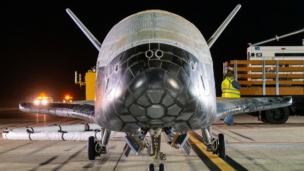The Indian Space Research Organization successfully tested its crew escape system this weekend, putting it one step closer to its ambitious plans for crewed spaceflight.
The mission launched a test version of the Gaganyaan crew module to prove that it could safely separate from the rocket and protect a future crew on board if something went wrong during its ascent.
The details: The crew module separated from the liquid-propelled single stage test vehicle at an altitude of 17 km.
- The drogue parachute to start the initial deceleration deployed at 16.7 km.
- The main parachute deployed once the module was under 2.5 km to allow it to softly splash down in the water.
“Crew Escape System performed as intended,” ISRO wrote Saturday on X, adding that the test mission started Gaganyaan “on a successful note.”
Long-term plans: India has notched a number of recent wins in space, including its successful Chandrayaan-3 mission to the lunar South Pole. But it has no intention of stopping. Indian Prime Minister Narendra Modi recently laid out plans to:
- Establish an Indian Space Station by 2035
- Send a person to the Moon by 2040
- And launch orbiter and lander missions to Venus and Mars
“This launch takes us one step closer to realising India’s first human space flight program, Gaganyaan. My best wishes to our scientists at @isro,” Modi wrote on X after the test flight.




